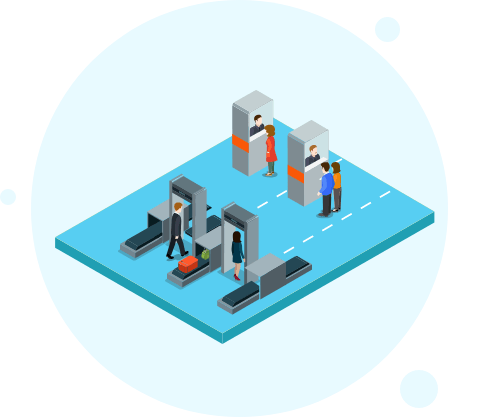Microlearning: The Ultimate Guide
What is Microlearning? What are the benefits? How can I use it?
What are the main characteristics of a microlearning course?
Microlearning content can be transferred in many ways, but using software purposefully built for this type of approach makes the most sense. Microlearning platforms like TalentCards, make it easier to create, manage and deliver microlearning courses. They also make it more accessible for learners to access and engage in learning.
Join the microlearning revolution and try TalentCards today!
Is there a difference between microlearning and nanolearning?
No. There's no difference between microlearning and nanolearning. Both terms refer to concise, highly-specific content turned into learning bites for the fast and effective transfer of knowledge.
But, you might see a minority of learning and development professionals use nanolearning to identify the tiny units of content within a microlearning course.
What are the benefits of microlearning?
Whether it's referred to as microlearning, microtraining or even nanolearning, one thing is clear: there are massive benefits for both learners and organizations who use a bite-sized learning approach
Learner attention rates go up
The benefits of bite-sized learning is backed up by available microlearning statistics. In fact, a study out of the Dresden University of Technology found that short content drives over 20% more information retention than long-form content.
Easy accessibility increases completion rates
Most microlearning research has found that the combination of bite-sized learning and smartphones boosts completion rates. Mobile phones encourage anytime-anywhere learning while shorter courses ensure learners are more likely to complete their training.
Skill gaps close faster
Short bursts of targeted content is ideal for just-in-time learning in the workplace. It ensures that trainers focus on one learning outcome at a time which lets learners quickly close any small knowledge or skill gaps they have.
Easy to create and update
Another benefit of microlearning is that due to shorter content, courses are much easier to build. And microlearning apps like TalentCards have intuitive content builders that do all the heavy lifting for developers.
Budget friendly
One of the financial benefits of bite-sized learning is that it has an impressive return on investment. The cost of creating a bite-sized course is much lower than the cost of creating long-form training.
Ideal for the modern learner
According to Deloitte’s influential 2014 “Meet the Modern Learner” study, employees have only about 20 minutes a week to focus on training and development. With microlearning, organizations can make those 20 minutes count.
Why is microlearning a better way of training?
HIGHER ENGAGEMENT
 Generates 50% more engagement.
Generates 50% more engagement.
TIME-SAVER
 Can be developed 3x faster than traditional learning.
Can be developed 3x faster than traditional learning.
COST-EFFECTIVE
 Requires 50% less cost in development compared to traditional learning.
Requires 50% less cost in development compared to traditional learning.
BETTER RETENTION
 Learning in 3-7 minute chunks is a perfect match to the brain’s working memory ability.
Learning in 3-7 minute chunks is a perfect match to the brain’s working memory ability.
HIGHER ENGAGEMENT
 Generates 50% more engagement.
Generates 50% more engagement.
TIME-SAVER
 Can be developed 3x faster than traditional learning.
Can be developed 3x faster than traditional learning.
COST-EFFECTIVE
 Requires 50% less cost in development compared to traditional learning.
Requires 50% less cost in development compared to traditional learning.
BETTER RETENTION
 Learning in 3-7 minute chunks is a perfect match to the brain’s working memory ability.
Learning in 3-7 minute chunks is a perfect match to the brain’s working memory ability.
Microlearning examples in business and education
The benefits of microlearning have been proven over and over in both business and education settings. This contemporary learning tool can be used as part of a broader program and in various parts of the learning cycle.
Microlearning in business
While microlearning can be adapted to suit most, if not all, industries, it especially shines in situations where an organization sees constant changes in their workforce or work environment. And need to quickly close knowledge or skills gaps.
Let’s look at a few microlearning examples in action.
Microlearning in education
A microlearning approach also makes a splash when used in educational institutions and across most subjects. One of the benefits of microlearning is that it can be used at all stages of the learning cycle. Especially in cases where repetition and memorization are involved.
Let’s look at three micro examples from the world of education.
How to create microlearning courses
Whether as part of a broader learning strategy or as a complete solution, microlearning is fast and affordable. But just because it's small, doesn't mean designing effective microlearning courses is easy. To capitalize on the benefits of bite-sized learning, here are a few microlearning best practices to follow.
Go mobile
According to Deloitte’s 2014 “Meet the Modern Learner” study, corporate learners unlock their smartphones up to 9 times per hour. It only makes sense to deliver micro-courses on a device they're already choosing to use. By combining microlearning with mobile learning, you'll get the benefits of both. (i.e. higher engagement, participation, retention and completion rates). Learners can build their skills on the go and even use microlearning courses as a quick reference guide to go back to anytime, anywhere.
Make them visual
One of the benefits of online learning is that it’s much easier to fill a course with visual elements instead of text-heavy content. In microlearning, infographics, images and other media can engage learners and help them remember information better.
Video is one of the most effective ways to transfer knowledge as it can cater to most learner types: visual, aural and verbal. Add subtitles to reach the linguists who prefer reading and make sure all learners have video control. Some might need to pause to process information before going any further. Most importantly, microlearning videos need to be short (3 - 5 min), otherwise learners will disengage and disconnect.
Provide additional resources
Yes, microlearning courses need to be focused on one idea, but you should also include links to other resources. Some learners will want to explore a topic deeper and you can make this easier for them by linking to extra articles, videos, or even giving them access to full-length training.
Keep it conversational
Effective microlearning courses are clear and focused. Your choice of language should reflect that. Replace formal, complex and long-winded thoughts with the active voice, simple words, and a conversational tone. These small changes make a big impact on your learners’ engagement.
So what are you waiting for?










